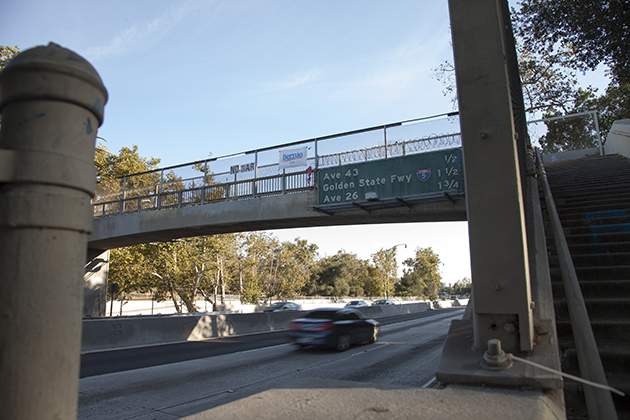
Overcrossing 1. Sycamore Grove. Photo: Christina Simons
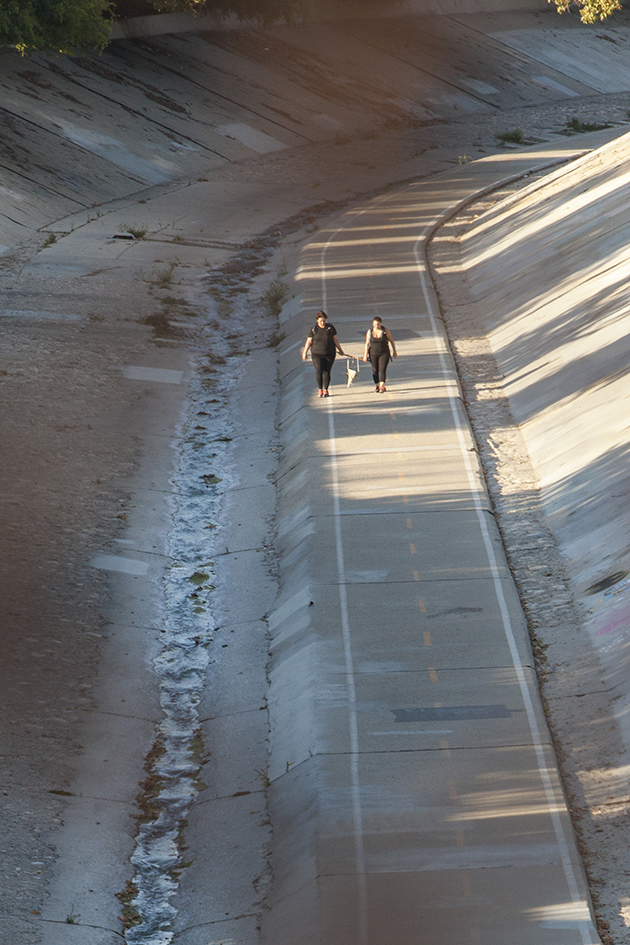
Overcrossing 1. Sycamore Grove. Photo: Christina Simons
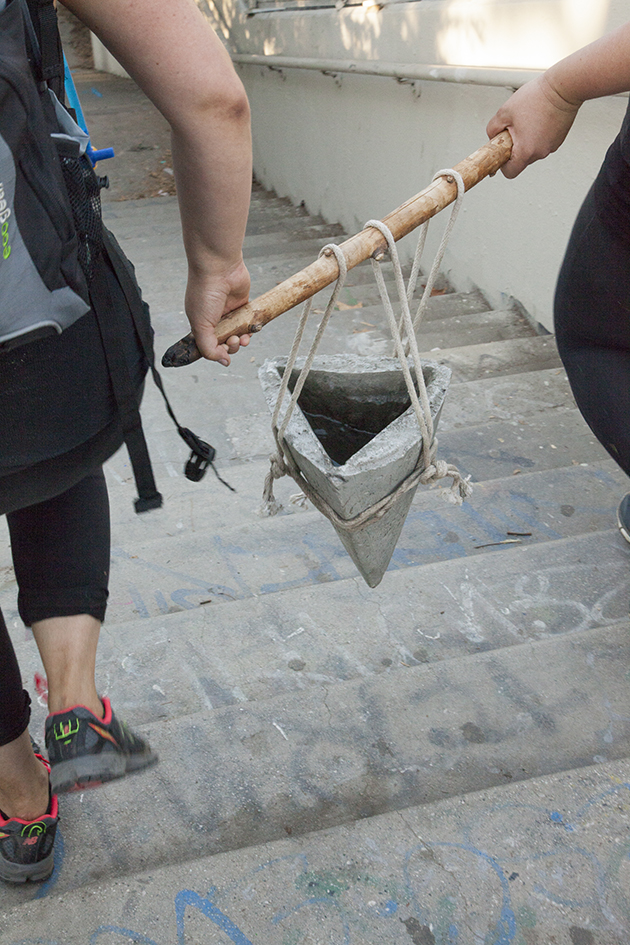
Overcrossing 1. Sycamore Grove. Photo: Christina Simons
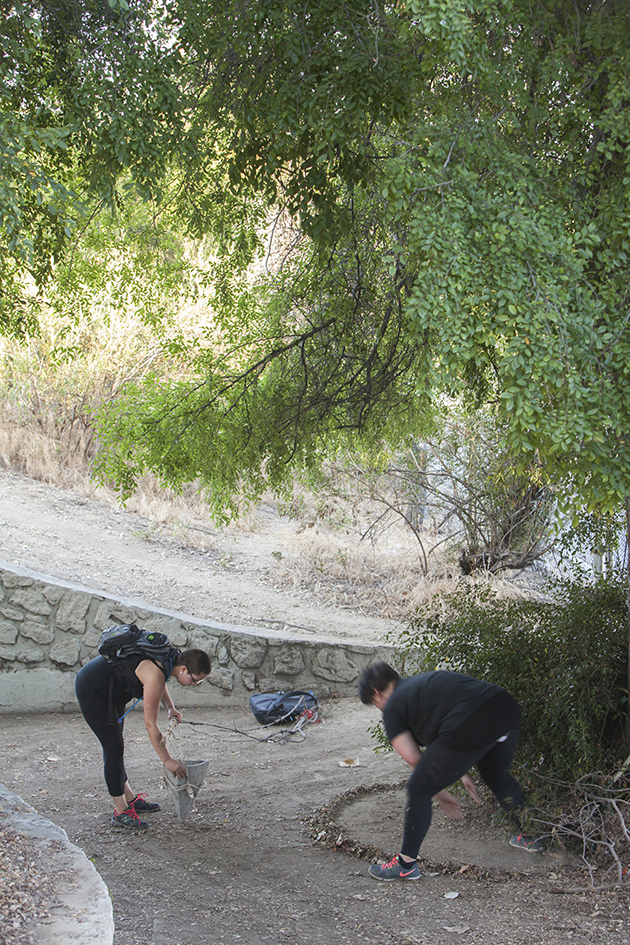
Overcrossing 1. Sycamore Grove. Photo: Christina Simons
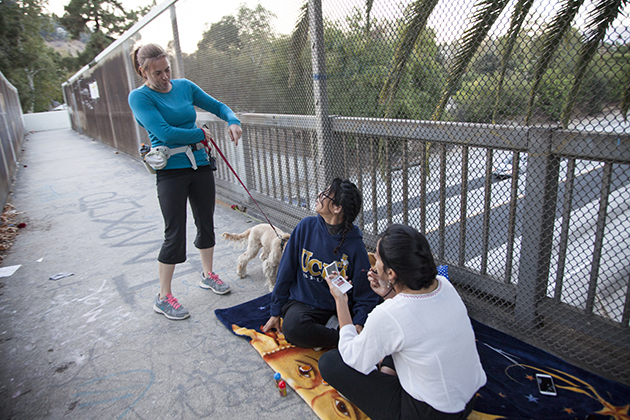
Overcrossing 1. Sycamore Grove. Photo: Christina Simons
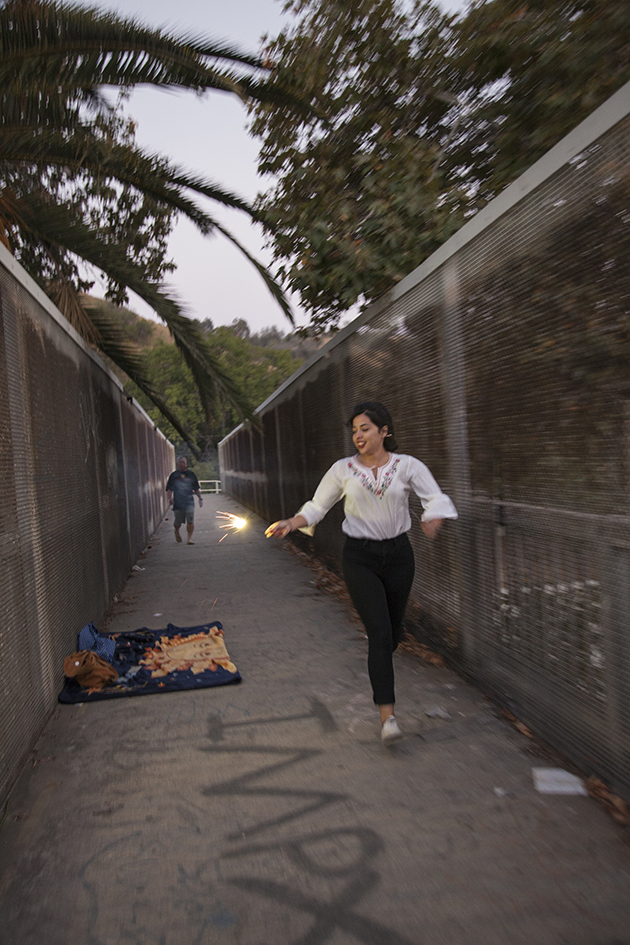
Overcrossing 1. Sycamore Grove. Photo: Christina Simons
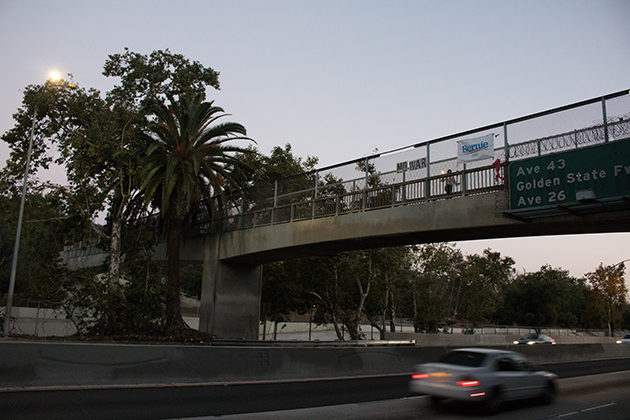
Overcrossing 1. Sycamore Grove. Photo: Scott Oshima
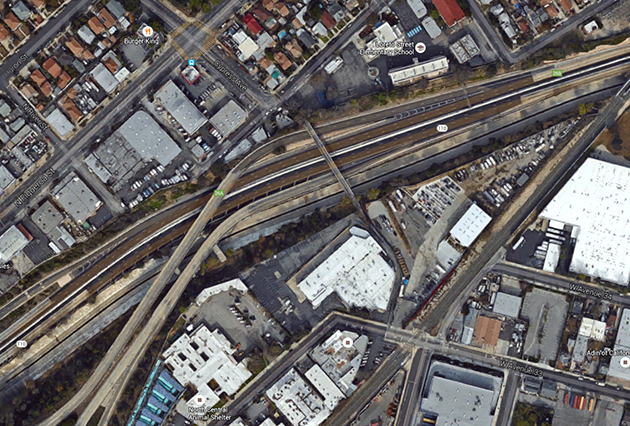
Cypress Avenue satellite image
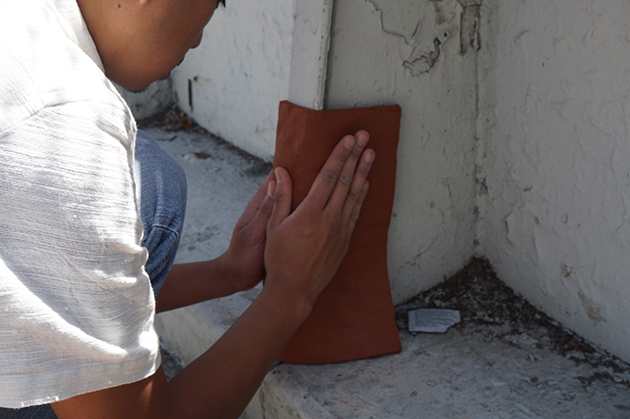
Breadagogy. Photo: Jonathan Crisman
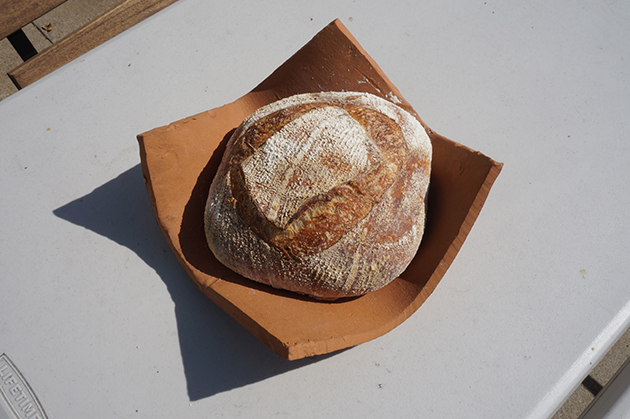
Breadagogy. Photo: Jonathan Crisman
Overcrossings Project
Scott Oshima
The Overcrossings Project is a series of three site-specific happenings on three pedestrian overcrossings above Los Angeles’ Interstate-110 Arroyo Seco Freeway. Taking place during summer 2016, the project includes performances, temporary installations, and writing by fifteen LA-based artists, including collaborations with two art collectives and a local tenants union. It will also culminate in an artist publication. The project is decidedly unfunded and guerilla.
The project began as a search for alternative means of displaying art.As a queer artist of colour and community arts educator, LA art galleries have always felt inaccessible and uninviting to both my students and me. Even the recent rise of ‘alternative art spaces’ have seemed to co-opt the term to mean traditional galleries in non-traditional spaces. At the same time, my peers and I were becoming increasingly concerned with the levels of displacement occurring around Northeast LA; our home. As an artist, I felt implicated in this process. Artists in search of affordable work space often establish the cultural ‘value’ in low-income neighbourhoods that stirs development interests. Similarly, developers use artists as tools to encourage economic investment. My search for spaces for alternative, accessible exhibitions became a way to navigate the complicated role of artists in gentrification and to find a space outside of this destructive art market.
The first sites I began to research were pedestrian undercrossings—underground tunnels built in the 1920s prior to the creation of traffic safety infrastructure. Often built for elementary schools, these dim-lit underground tunnels were an afterthought to the embrace of the automobile and an absurd attempt to provide safe passage for children. Today, most of these hell holes are gated off, but a few still function as school crosswalks (only open during school hours) and two in Northeast LA have been reclaimed by local communities as art spaces. However, working with public school property would have become a bureaucratic nightmare, and I did not want to encroach on existing community art spaces.
After the 1940s, most grade-separated pedestrian crossings became overcrossings—pedestrian bridges over railways, streets, and eventually, freeways. Los Angeles has been historically shaped and divided by the city’s freeways. Low-income communities of colour have been particularly devastated by the construction of freeways, such as the I-5 through East LA and the I-10 through South LA. I began to focus on the I-110 Arroyo Seco Freeway in Northeast LA, which is considered the world’s first modern freeway. This original section of the now-expanded freeway runs from downtown LA to South Pasadena, and has cut a wall through each of the neighbourhoods between: Highland Park, Cypress Park, and Chinatown. For most of its path, the I-110 follows the Arroyo Seco, a seasonal river, which was home to local Tongva-Gabrieleño Native Americans, and was celebrated by early California arts promoter and historical preservationist Charles Lummis. Beginning in the Depression, the Works Progress Administration channelised the river to provide flood control for ever-growing city and its freeway. The construction of the first freeway was concurrent with the destruction of neighbourhoods and natural resources. The I-110, and its history, represents intersections of car culture, LA’s real estate boom, environmental destruction, and the ongoing shifts in the surrounding neighborhoods. The freeway’s three pedestrian overcrossings were an exemplary site to consider the city’s unstoppable lust for progress and neglect for the residents it is meant to serve. They became the sites for the Overcrossings Project.
I felt that a project about and on these spaces required a plurality of voices; the possible connections to these spaces were rich in meaning, but more importantly, I did not feel I could be the sole voice on these issues. I began having conversations with other artists and peers who I felt had similar interests in history, gentrification, or alternative or political art practices. Together, we formed a small group of organisers made up of artists, academics, teachers, and activists: Erik Benjamins, Jonathan Crisman, Heather M. O’Brien, Jonathan Takahashi, and myself. We created an open call for site-specific work and writing, and shared it within our communities and outwards to groups that might be interested, including local activist groups, community centres, local artists, and leaders of past LA Chicanx political art movements. We felt that the participating artists should be representative of the communities that the project is in dialogue with. We received about fifteen submissions and accepted ten.
One community activist group declined our invitation. For them, an art happening, regardless of its politics, would only attract more artists, the creative class, and the gentry. Another artist, who proposed work and was accepted, withdrew because of concerns that their collaboration with their students from East LA would become an Othering spectacle for a White audience. They also felt uncomfortable creating work alongside artists who did not have personal connections to the neighbourhood. While these responses were jolting, they were cause for continued dialogue on these important issues. Who is allowed to speak about the history and issues of a particular community? As artists, how do we create art about or in resistance to gentrification, when we are implicated in its process?
Most of the Overcrossing Project organisers and accepted artists do not have ties to the Northeast LA neighbourhoods. We did not ask artists to disclose their racial identities or residences, but we were conscious that the group appears a majority White. The organisers and I discussed putting out another open call in the hopes of addressing this issue; however, we felt that there was no way to do so without tokenizing artists of colour or residents of these Northeast LA communities. Putting emphasis on identity would perpetuate the notion that only insiders are able to speak to these issues or are obligated to take action against them; it would silence those in solidarity or those who are conscious and critical of their participation in issues such as gentrification. Such isolation could be debilitating to the possibility of resistance and change. We had done our best in the outreach for the open call, and indeed, our group included a plurality of identities, including folks from Asian and Latinx diaspora, women, and queer folks. But our concern should not be about our appearance, residences, or races, but about our ethics. Both the artists from and outside these communities chose to share their voices and experiences—with care and criticality—as a way to lift up the struggles of the people who are most affected by these issues. Even as a plurality of voices and peoples, we cannot and do not intend to speak for everyone.
The concerns around the audience for these happenings, and our position as a group of majority outsiders, were intensified by the actions against ‘public’ art performances in East LA. For example, the Boyle Heights activist group Serve the People had interrupted and forcibly pushed out LA-based opera company The Industry from Hollenbeck Park. The Industry performs in public spaces yet is often inaccessible. Their first major performance, Invisible Cities at Union Station, was both ticketed and required wireless headphones to hear most of the opera and orchestra. The production also coincided with the ‘revitalization’ of Union Station and the displacement of the homeless population who often took refuge in the lobby. Their most recent production, Hopscotch, took place partly in Boyle Heights’ Hollenbeck Park—a public lake park ripped apart by the I-5 freeway construction in the 1960s—and was entirely in English. The Overcrossings Project clearly differed from The Industry in its accessibility, intent, and site-specificity, but we listened closely to the criticisms and worked to address issues of disruption and access.
We decided to return to an earlier project concept: the performances and installations would happen and disappear without publicity or the invitation of an outside audience. Similar to Hollenbeck Park, the overcrossings are not empty sites to be activated. The California Department of Transportation requires the needed passage of over 100 pedestrians during peak traffic to warrant the construction of an overcrossing. The bridges are used by residents, students, the homeless population, and others en route to and from the surrounding neighborhoods, Sycamore Grove Park, Debs Park, Dodger Stadium, Loreto Street Elementary School, etc. To invite more outsiders could be disruptive to the spaces and neighbourhoods, and create an uncomfortable power structure of privileged spectatorship. We opted for an incidental audience consisting of the many people who use the overcrossings. We had open discussions between the artists and organisers about maintaining the use of the overcrossing as a public pathway, and asked every artist to consider their work’s accessibility for multiple audiences. In our last meeting with the artists and organisers, we came to some disagreements about what constitutes a disruption if the project itself is an unusual use of public space. Faced with some of these concerns, another artist withdrew. In making work outside of the safety of the white cube and in dialogue with community issues, we had to allow ourselves to be vulnerable and open to criticism and change.
Each artist engaged with the overcrossings and the surrounding communities in ways that are specific to their practices, interests, and experiences. Their work explores subjects including the erasure of history and land associated with the Arroyo Seco channelization, personal experiences of displacement, a history of migration, the environmental impact of freeways, and a birds-eye view of the city and its issues.
The first happening took place on Sunday 4 June on the Sycamore Grove pedestrian overcrossing (CalTrans bridge 53-344) in Highland Park. Two sets of siblings—Julie and Kristy Lovich, and Jess and Yvette Castillo—collaborated on performances around and on the overcrossing. The projects, in the artists’ words (the latter of which is intentionally without English translation) were as follows:
Hekate, Julie and Kristy Lovich
Hekate walked 10 miles in the Arroyo Seco riverbed from the Hahamongna watershed to the Sycamore Grove pedestrian overcrossing, carrying with them a concrete vessel filled with water from the north side of Devil's Gate Dam. The water was delivered to the foot of a tree at the overcrossing as a gesture toward replicating and honoring the vocation of the once active waterway.
Jess and Yvette Castillo
Hermanitxs desplazadx, Jessy e Yvette Castillo, dijerxn ayer mientras que trenzar el pelo: Lxs únicxs cosxs que quedx de nuestrx niñez es el color rojo (sangre, uñas, labios, corazón, y lxs rosas de Tía Raquel - con todx sus espinas) y la relación con la tierra. Aquí crecemxs, sin casa. Aquí luchamxs, cruzandx lxs barrios, el freeway, y lxs hoyos de nuestrx vida.
The first happening was scheduled to coincide—unofficially—with the Lummis Festival, an annual community event with music, poetry, and art in honour of Arroyo Seco preservationist Charles Lummis. Even with the crowd of dancing families at the adjacent Sycamore Grove Park, only about twenty pedestrians encountered the happening. A few asked us questions; many walked by and averted their eyes, as we all do in public spaces.
The second happening took place across the month of July on the Cypress Ave. pedestrian overcrossing (CalTrans bridge 53-538) in Cypress Park.
Jonathan Takahashi and the Los Angeles Tenants Union
Two questions were posed by the renting tenants in the city of Los Angeles over the Arroyo Seco Freeway on July 10th, 2016: ¿A donde irás cuando no puedas pagar la renta en tu barrio? Where will you go when you can’t afford your neighborhood?” and “¿Por qué no luchar para quedarte? Why not fight to stay?” These questions highlight the city's issues of gentrification and housing rights, and our obligation to collectively resist.
Breadogy, LABOR, PATAO and Alex Reed
What can bread teach us? Breadagogy is a project which brings together naturally leavened bread, clay sculpture, elementary school education, and the Cypress Ave. pedestrian overcrossing to think through this question. Clay molds cast from various parts of the bridge are used to bake loaves of bread which serve as teaching tools in a specially developed curriculum. Topics in the classroom include microbiology, the human microbiome, food studies, architecture and urbanism, Los Angeles, material studies, clay casting, and art. The curriculum will be initially tested at Thank You For Coming (3416 Glendale Blvd, Los Angeles, CA 90039) on August 14 from 11am-3pm, and later shared with Lareto Street Elementary School.
The final happening took place on 7 August at the Yale St. pedestrian overcrossing (CalTrans bridge 53-105) in Chinatown. (This final event had not yet taken place at the time of writing this article; in absence of the artists’ statements from the temporary markers, I will describe each.) Flora Kao released a flood of bright magenta bougainvillea flowers onto the overcrossing and lined the spiral ramp with a woven scarf made from red twine—a packaging material commonly used in East Asian products and a reference the folk tale of the red string of destiny. Frances Huynh installed text in English, Chinese, and Spanish, sharing stories of Chinatown collected from her conversations, personal memories, and interviews. Scattered across the entire bridge, four friends and I sang songs that my mother used to listen to in her car throughout my childhood; in between songs, we read a fragmented history of my family in Los Angeles. As the sun set, Andrew Huber played birdcalls collected from around the neighborhood. The overcrossing connects Chinatown, a community resisting gentrification, to Elysian Park, a Chicanx/Latinx neighborhood displaced by the construction of Dodger Stadium in the 1960s. With this in mind, we scheduled the final happening to coincide with a Dodger game.
At the end of each happening, a few of the artists and I swept the overcrossing in a gesture to both mark and erase our presence. The following morning, I installed a temporary historical marker with the above artists’ statements—in both English and Spanish for the Sycamore Grove and Cypress Ave. overcrossing and their majority Latinx communities, and additionally in Chinese for the final happening in Chinatown. The markers are printed on paper and tied with string to the entrances of the overcrossing.
As is the nature of performance art in general, the primary access to this work will be in writing, documentation, or adaptation. Each artist is in control of how their work is (or is not) represented in the artist publication, which is set to be released in late September with three essays that provide context and history. As with the markers, the publication will be bilingual, in English and Spanish, and pending our collective finances, in Chinese. The publication will be made in multiple platforms: an affordable direct-to-print online service, a free downloadable PDF, and a zine version shared at the overcrossings, public libraries and local community centres and spaces.
The Overcrossing Project's intent is in line with the historical use of freeway spaces by artists and residents to speak up against the city's neglect of the people and spaces it is meant to serve. To conclude, I would like to share a quote from Eric Avila's Folklore of the Freeway that has been meaningful to this project:
"The appropriation of these [freeway] spaces does not solve the problems that afflict these neighborhoods [....] This is not the kind of spatial justice that delivers political and economic parity. Rather, it amplifies the demand for spatial justice, using freeways to talk back to their creators.”
I am not yet certain what impact, if any, this work will have in our community, but I feel privileged to have had the opportunity to have these difficult, profound conversations with the project co-organisers and artists—directed inward in examining our role as artists and citizens, and outward to the city and its concrete veins.



